Ten Years Later: The Saints and Katrina

Ten Years Later: The Saints and Katrina
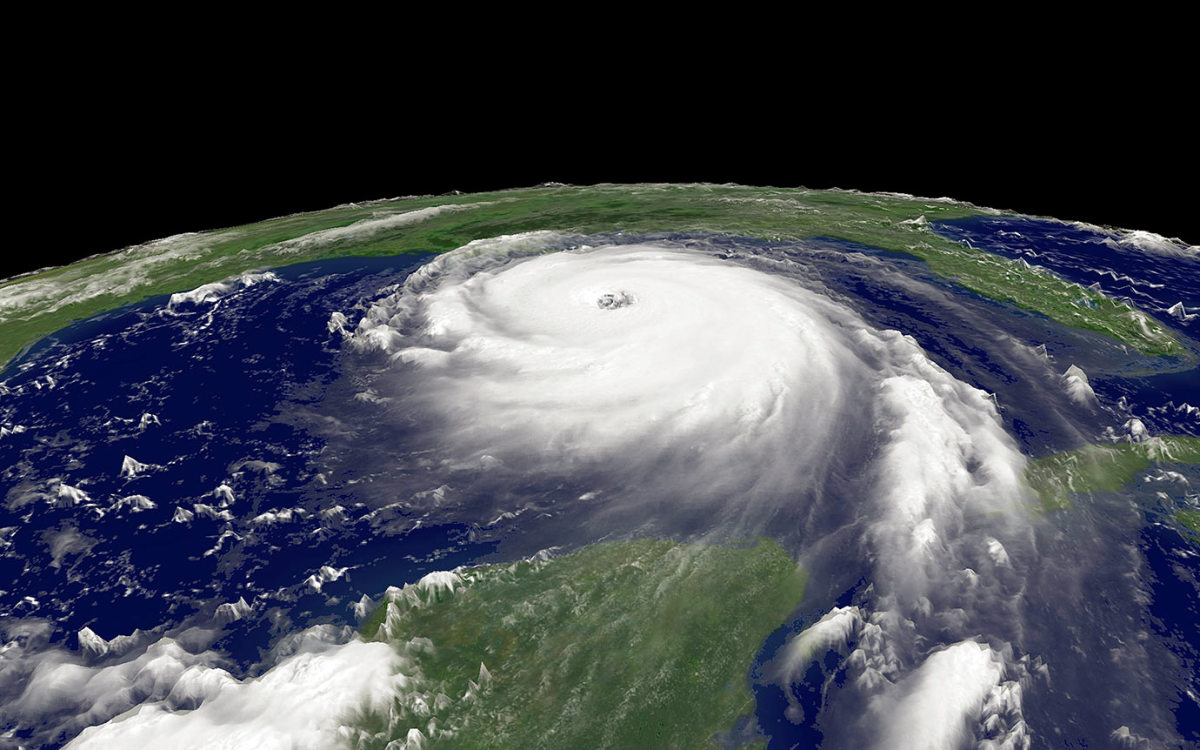
Aug. 26, 2005: Meteorologists warn citizens in the Gulf States that a major storm is on its way. Louisiana Governor Kathleen Blanco declares a state of emergency, and the White House begins deploying National Guard troops to the region.
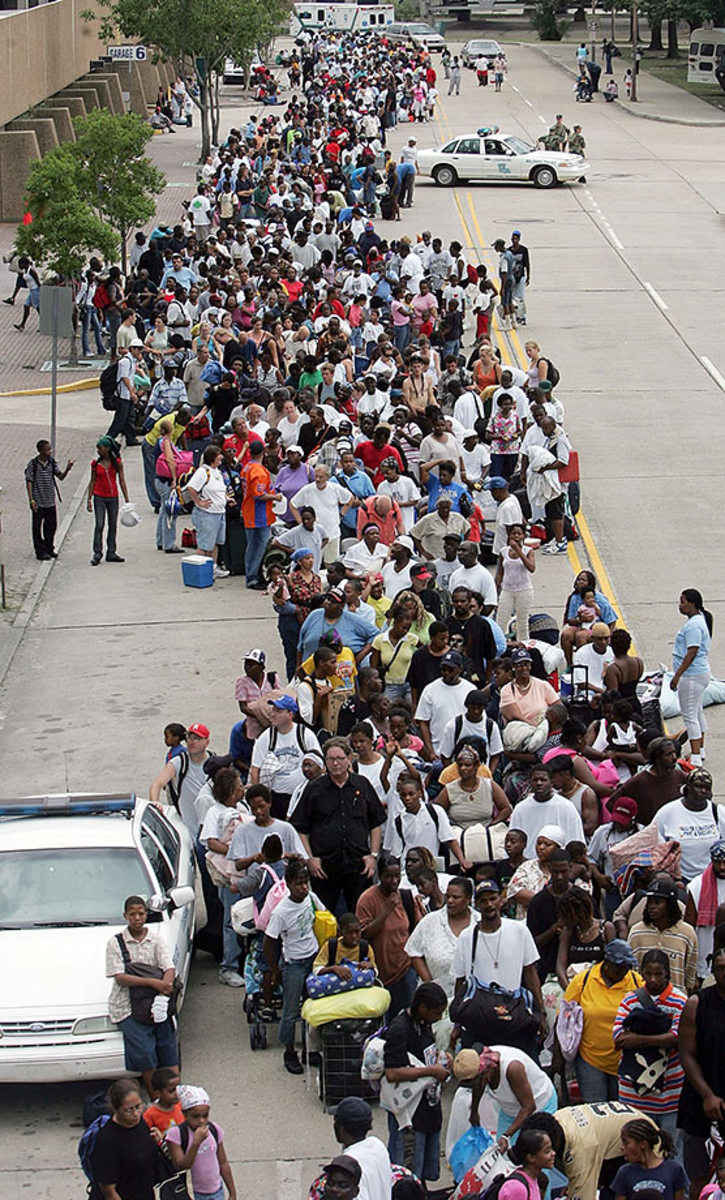
Aug. 27, 2005: The Superdome transitions from house of fandom to house of refuge. Hurricane Katrina winds reach 115 mph and increases to a Level 3 intensity. Local citizens begin to leave New Orleans.
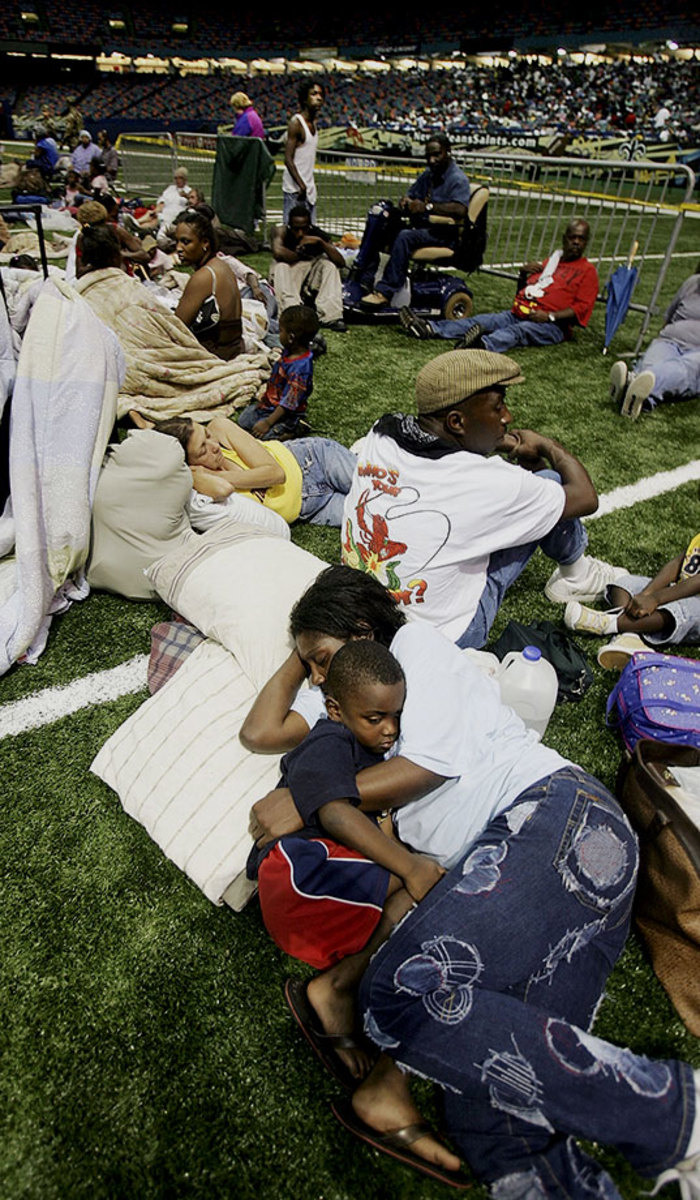
Aug. 28, 2005: Katrina becomes a Category 5 storm with winds swirling at 160 mph. In the morning, New Orleans mayor Ray Nagin orders a mandatory evacuation of the city. About 14,000 residents unable or unwilling to leave New Orleans take shelter at the Superdome.
August 2005
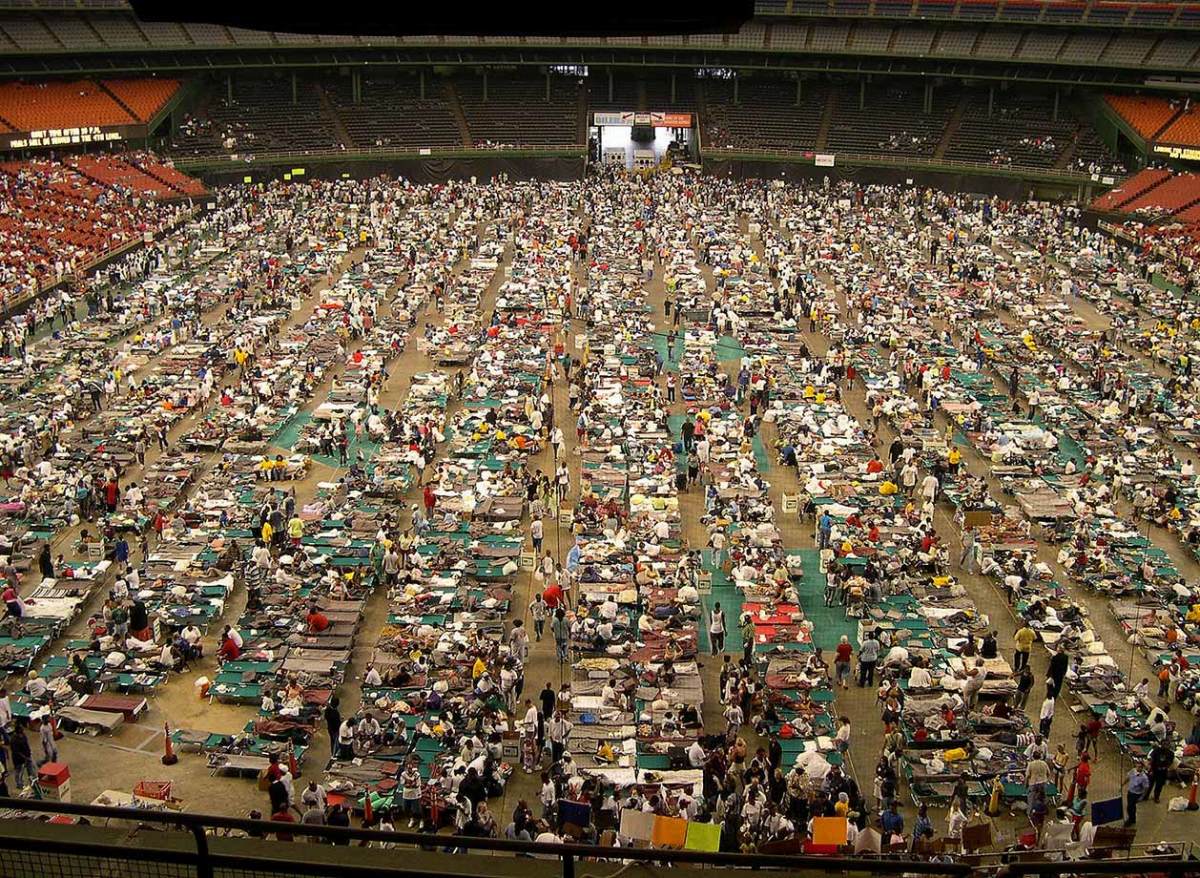
That number swells to 30,000 in the days that follow.
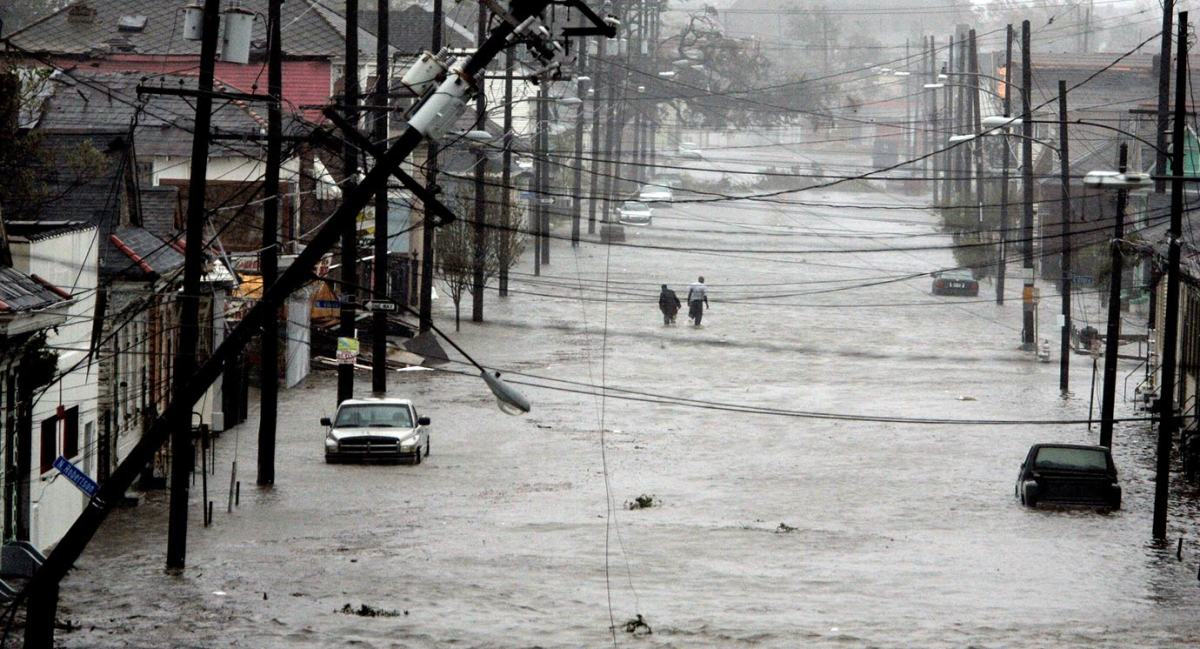
Aug. 29, 2005: In the early hours Category 4 Hurricane Katrina makes landfall. By 8 a.m. the storm eye's passes through New Orleans and the sense is that the city has avoided a catastrophe. But just two hours later, reports surface that levees in the Ninth Ward are overtopped. By late morning, a large section of the 17th Street Canal levee is breached and the city begins to flood.
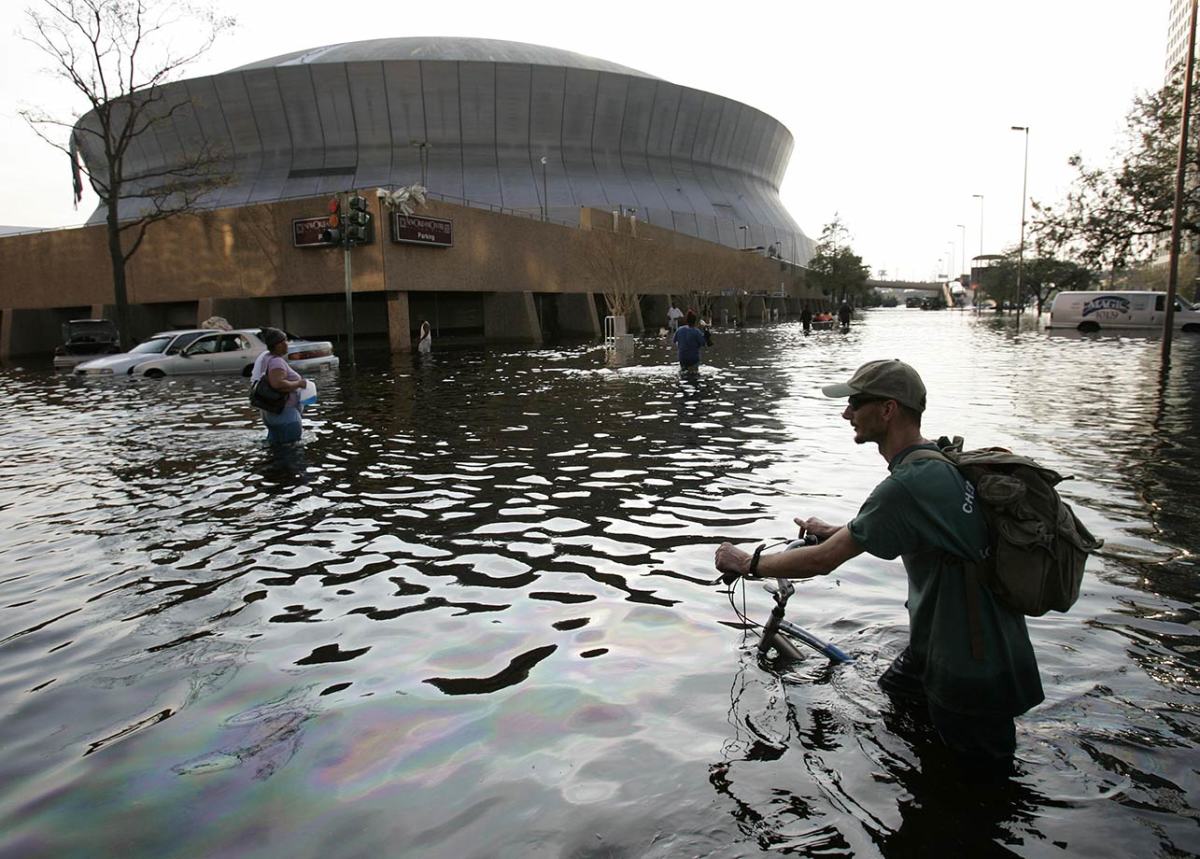
Aug. 31, 2005: A man pushes his bicycle through flood waters near the Superdome. Hurricane Katrina left much of the city under water. Officials called for a mandatory evacuation of the city, but many resident remained in the city and had to be rescued from flooded homes and hotels.
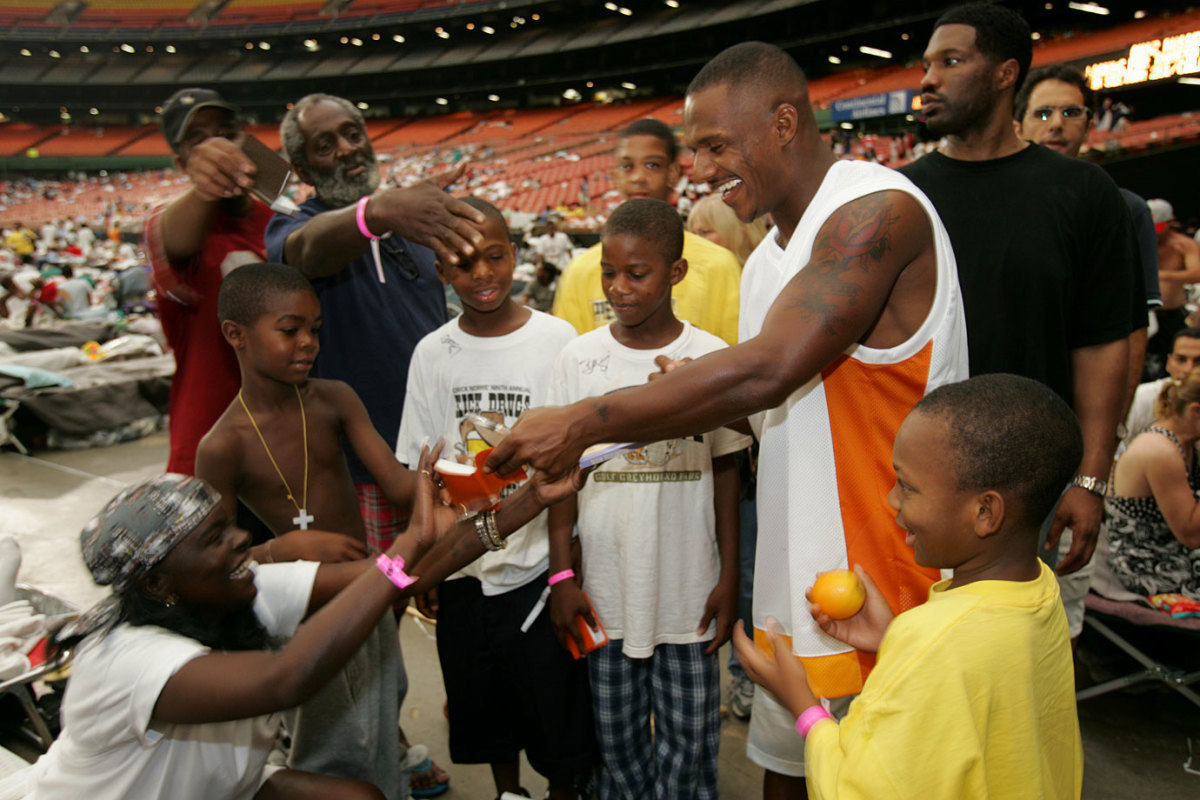
Sept. 3, 2005: Saints wide receiver Joe Horn visits evacuees sheltered in the Astrodome. "At the Astrodome it was like a refugee camp," said Horn. "It was just sad. But when the kids ran up to me I got more excited about playing football."
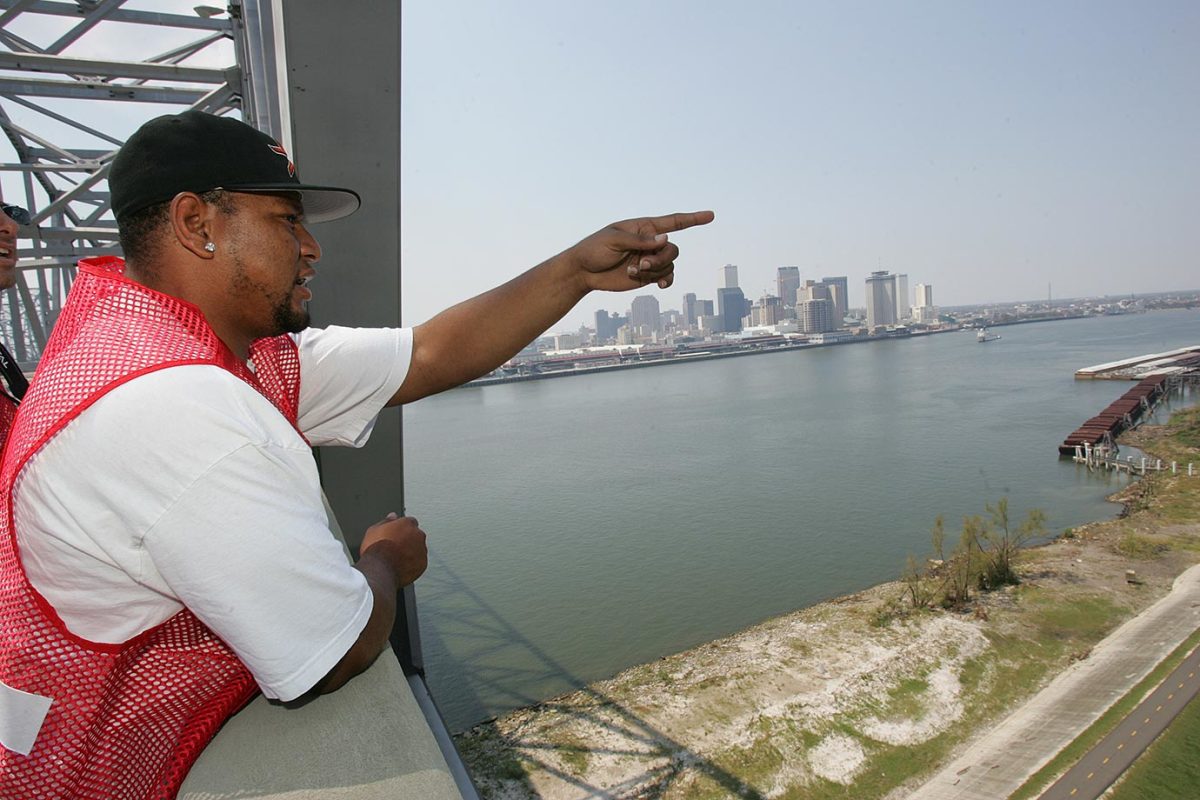
Sept. 4, 2005: Saints running back Deuce McAllister surveys the damage in New Orleans after Hurricane Katrina. "I had an opportunity to go back that Saturday and do stuff for the Red Cross," said McAllister. "Even to think we considered these people refugees. They were not refugees; they were people who lost their homes. When someone loses their home in a fire we don’t use that term. These people were American citizens who just lost their homes. To think they could not get help. To think we were responding in the manner we were was really mind-boggling."
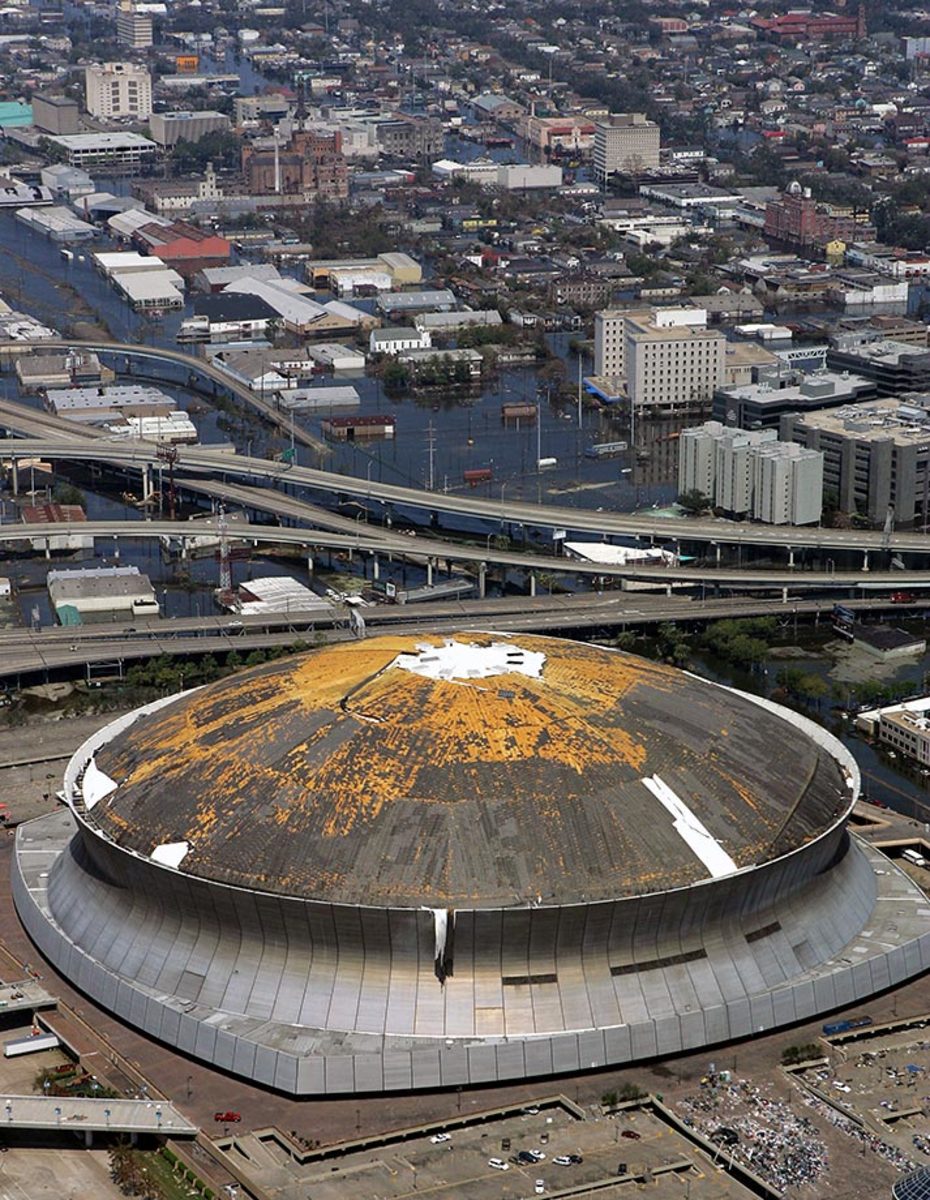
Sept. 12, 2005: The Saints, left searching for a host site after Hurricane Katrina ravaged the Superdome roof, announce plans to split seven home games this season between Tiger Stadium in Baton Rouge and the Alamodome in San Antonio.
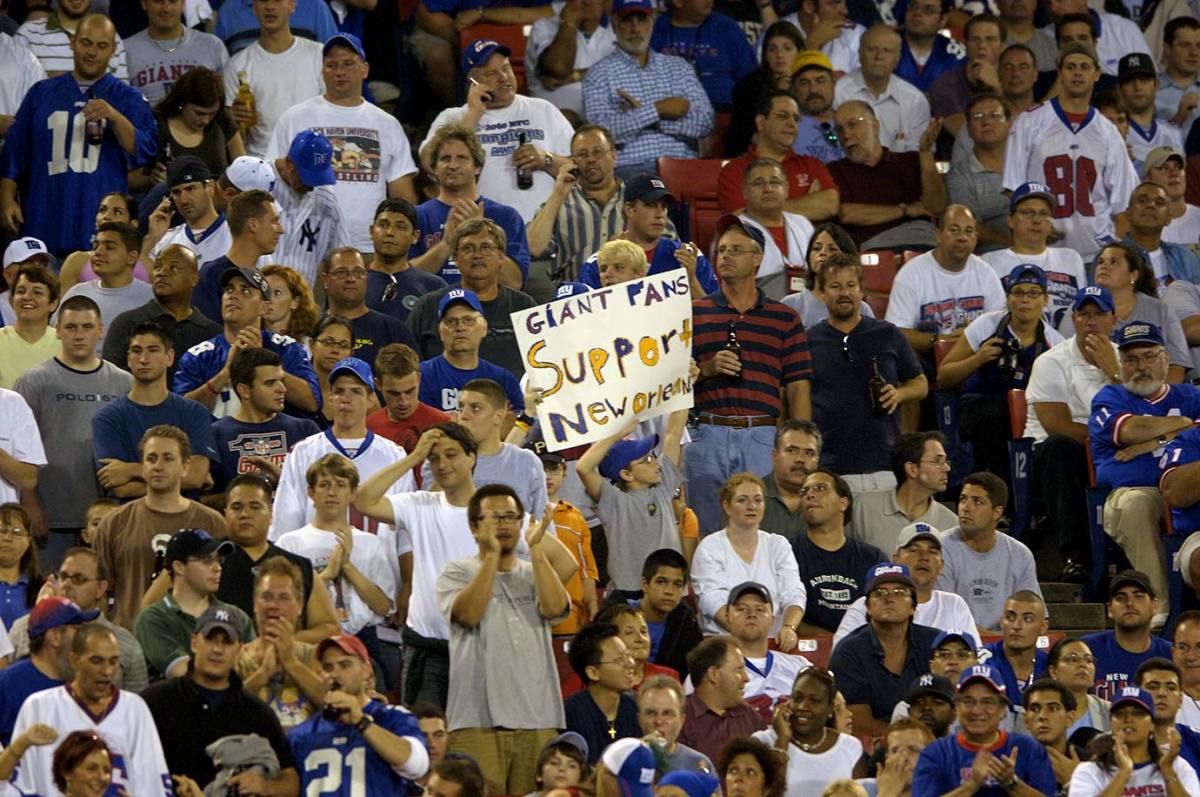
Sept. 19, 2005: The Saints play their first regular season home game at Giants Stadium. Against the Giants. As storm damage is assessed, uncertainty about the team's future looms.
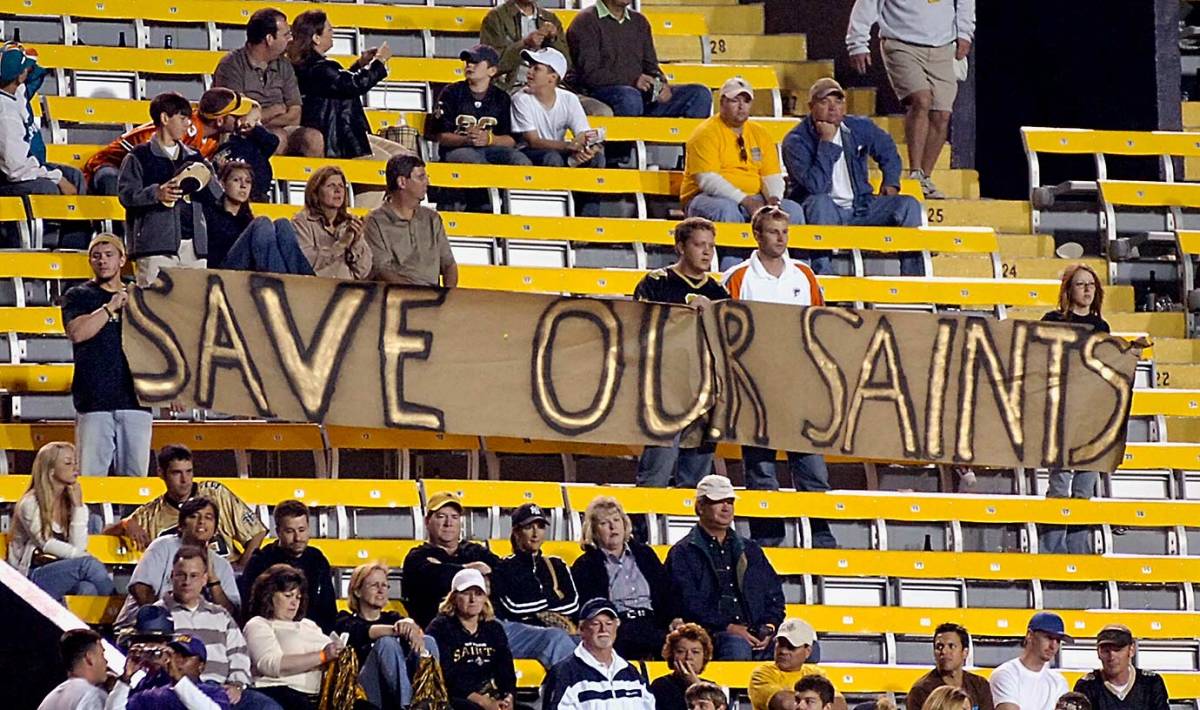
Oct. 30, 2005: Saints fans unfurl a "Save Our Saints" banner in the closing moments of the team's 21-6 loss to the Miami Dolphins at LSU's Tiger Stadium in Baton Rouge, La.
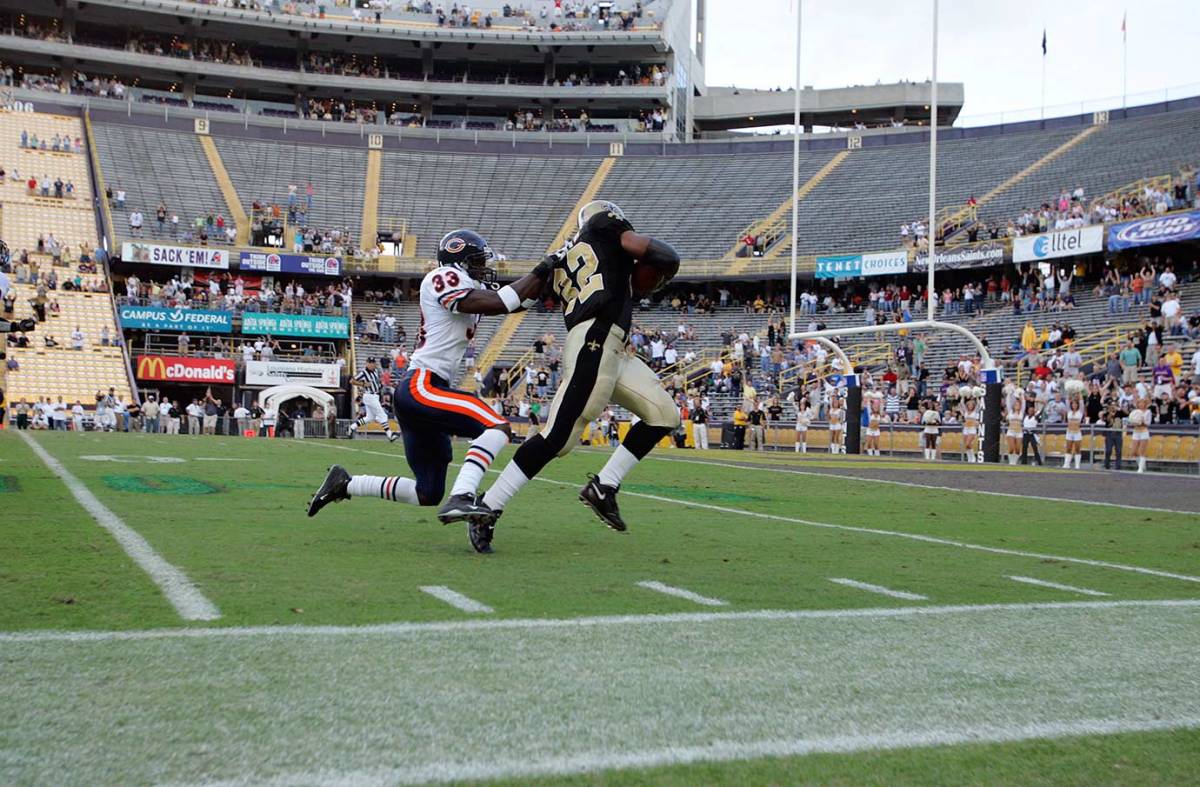
Nov. 6, 2005: Saints running back Antowain Smith is tackled by Bears cornerback Charles Tillman during a game at LSU's Tiger Stadium in Baton Rouge, La. The Bears won 20-17 on a last-second field goal.
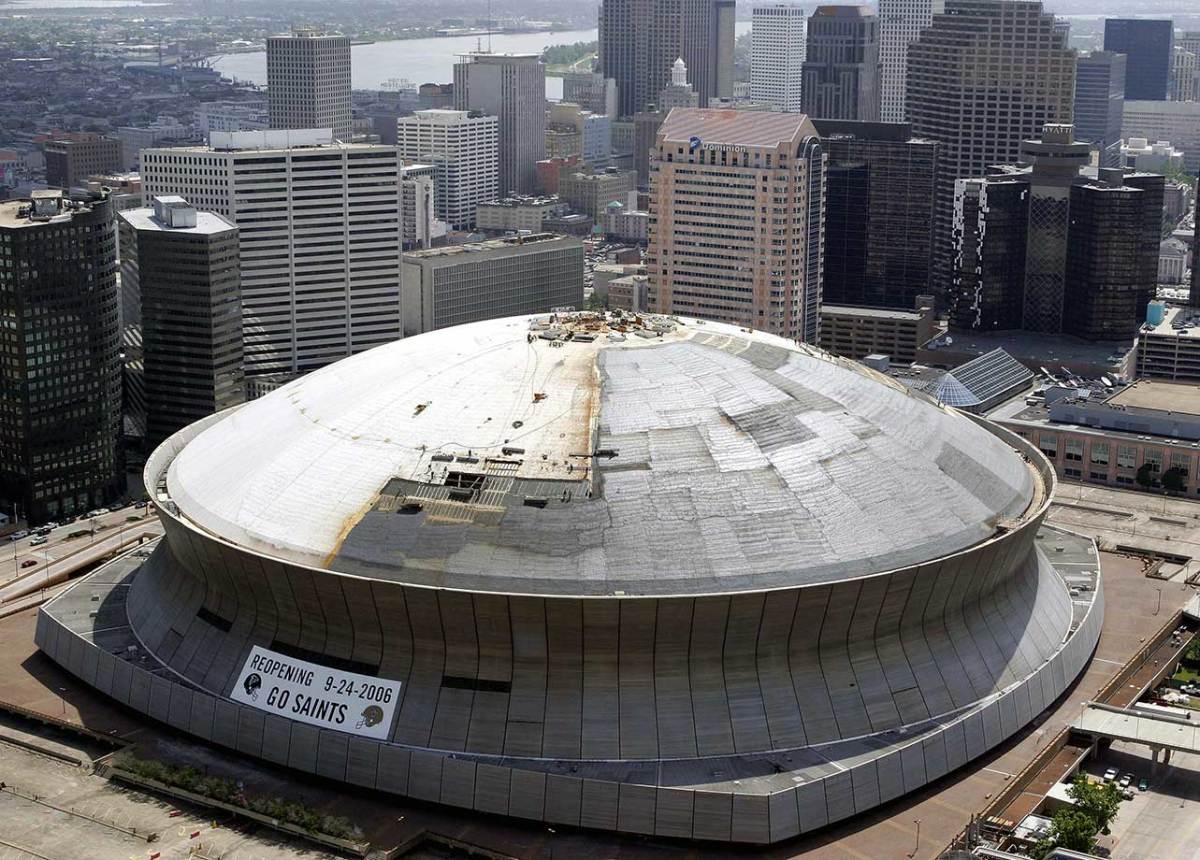
Dec. 30, 2005: The Saints announce they are coming back to the Superdome in 2006.
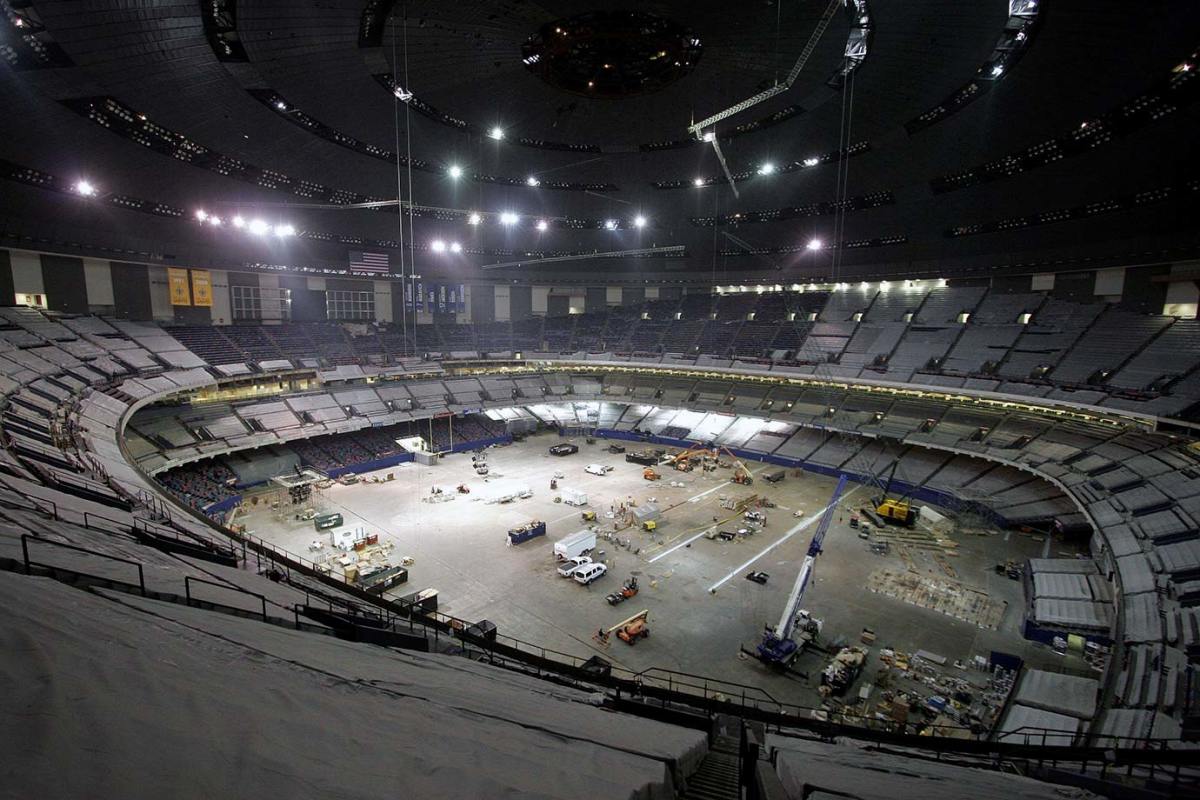
Aug. 8, 2006: Repairs and renovation work is still being done on the Superdome.
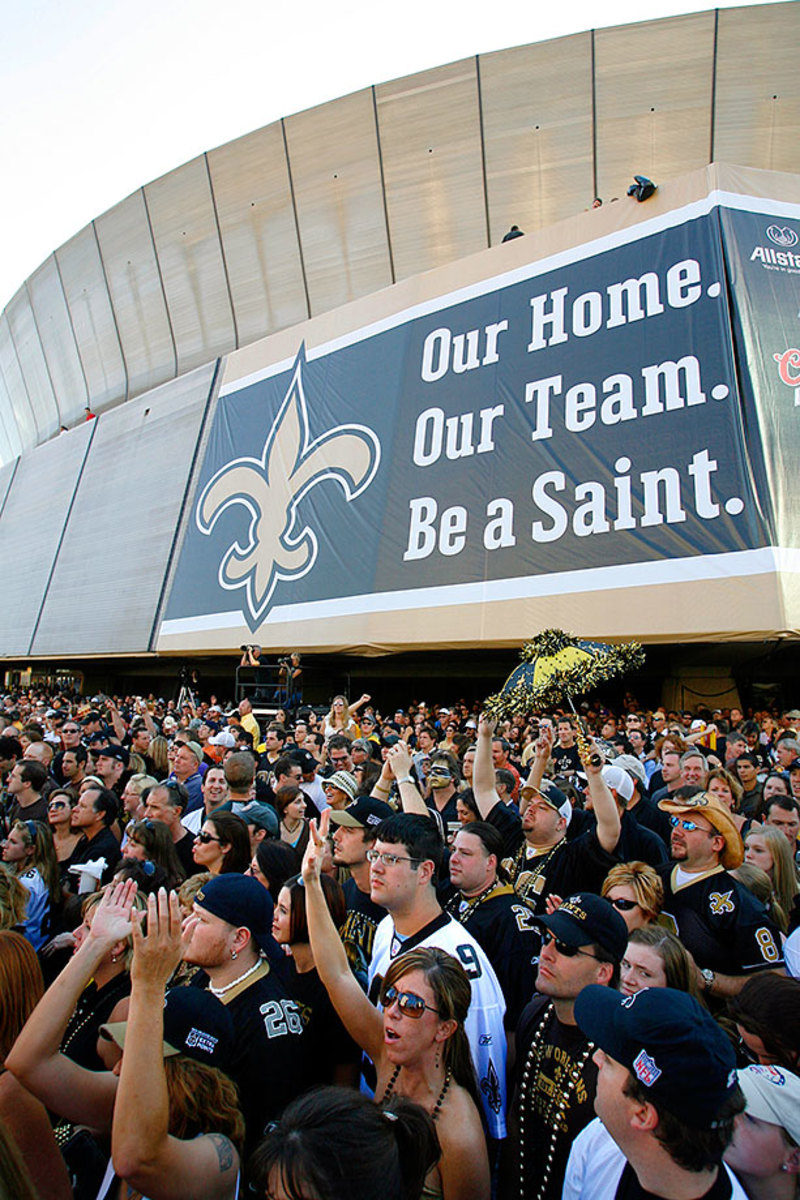
Sept. 25, 2006: With 70,000 fans and supporters gathered from around the globe, the Saints make an emotional return to the Superdome to play the Falcons.
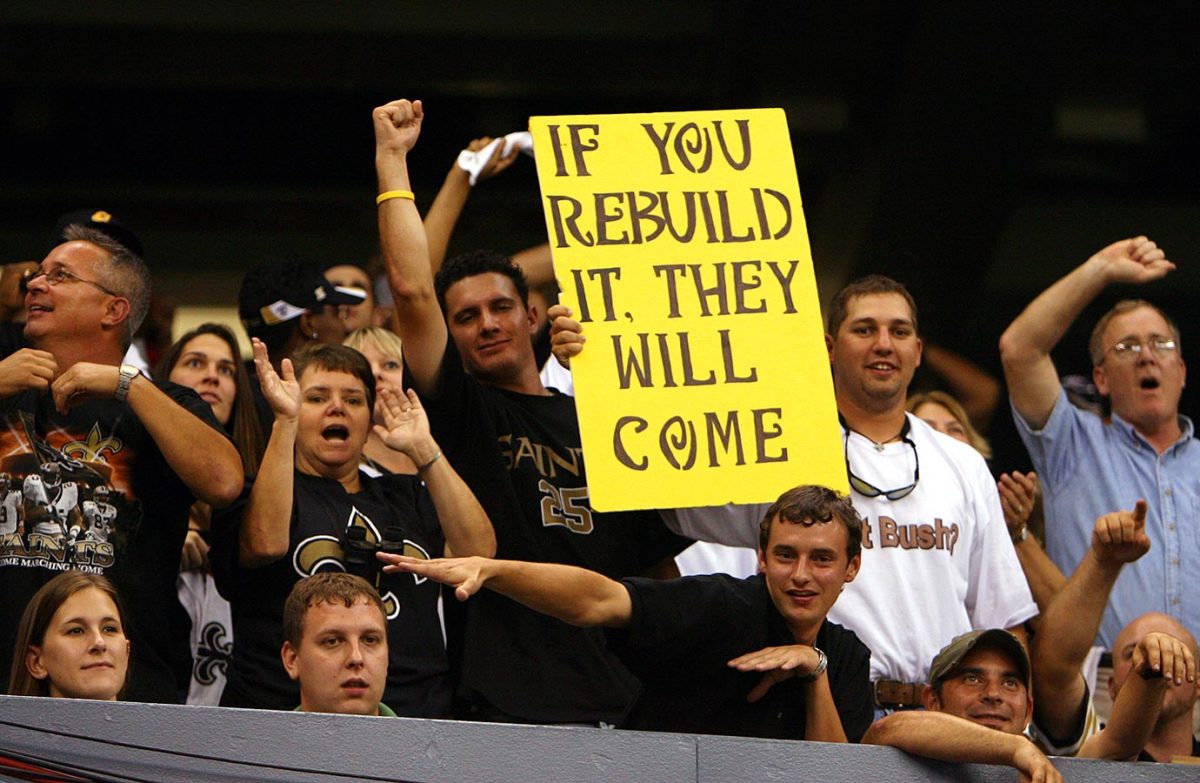
Sept. 25, 2006: Saints fans cheer before the team's first game back at the Superdome.
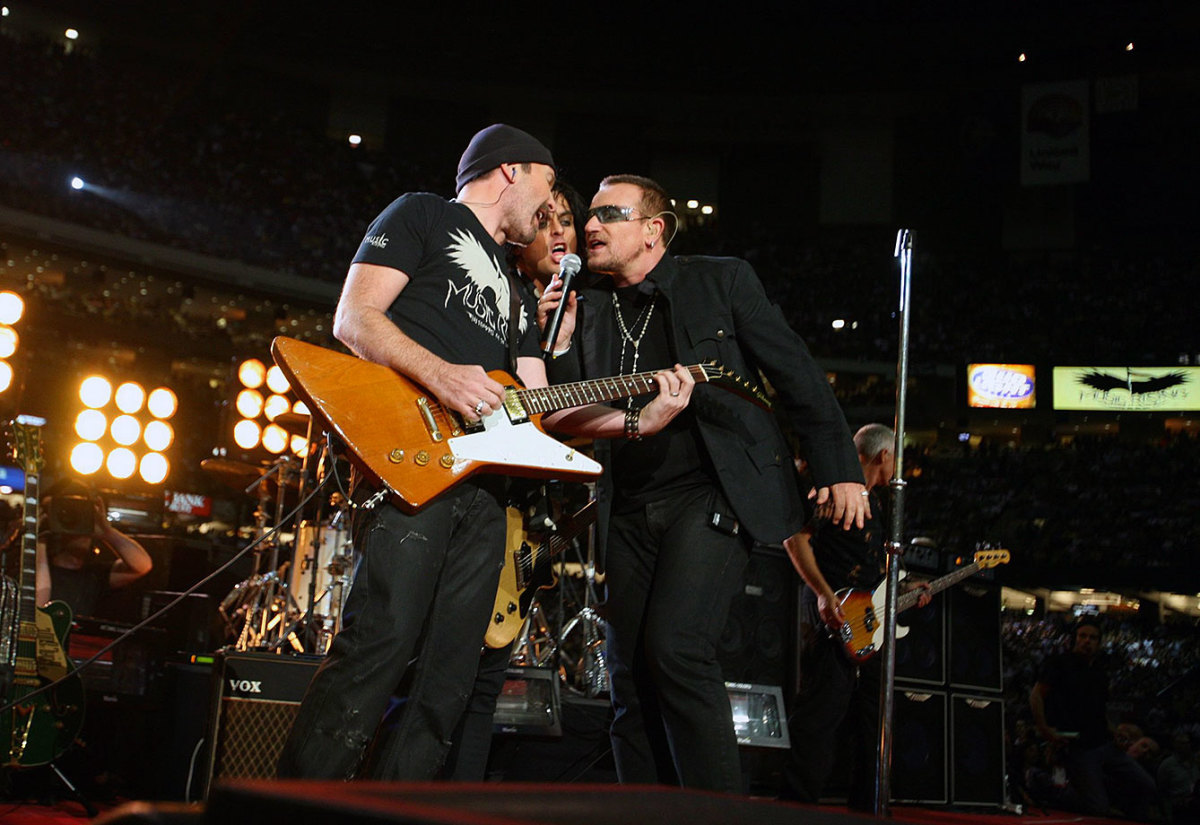
Sept. 25, 2006: U2 and Green Day perform before the Saints-Falcons game at the Superdome.
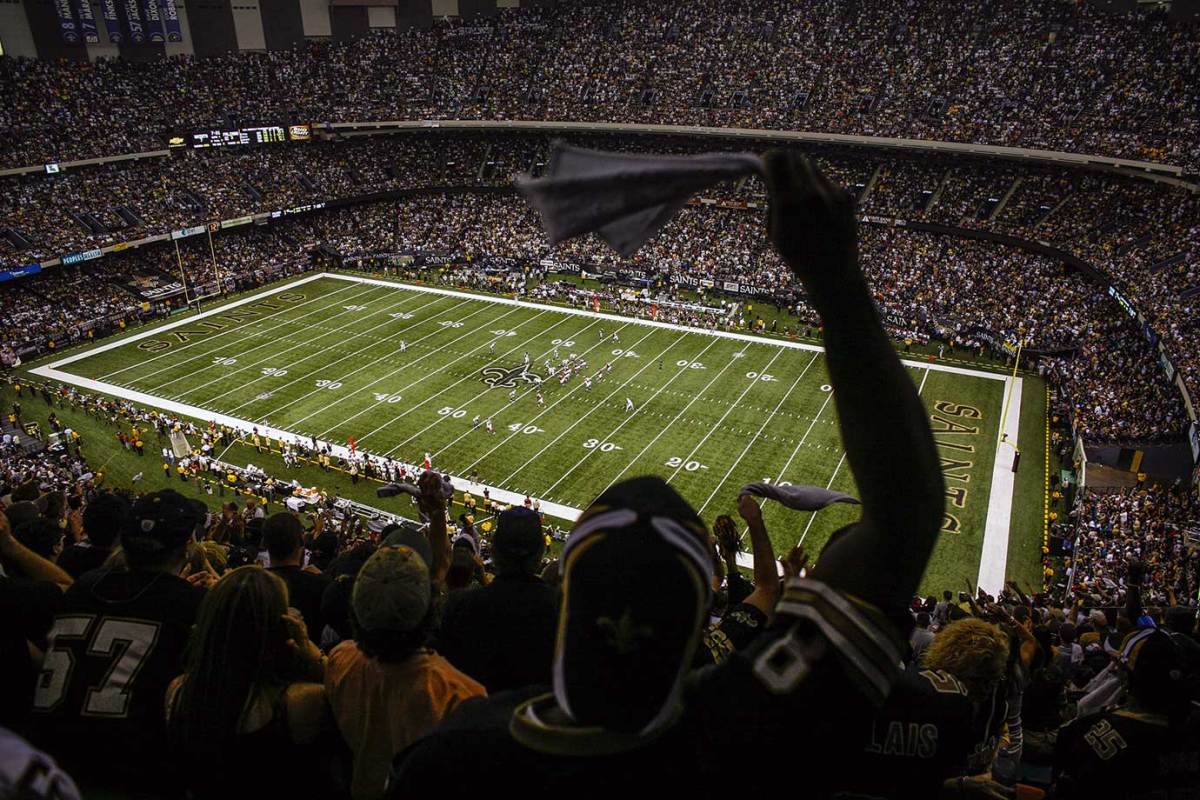
Sept. 25, 2006: Saints fans cheer during the team's first game back at the Superdome.
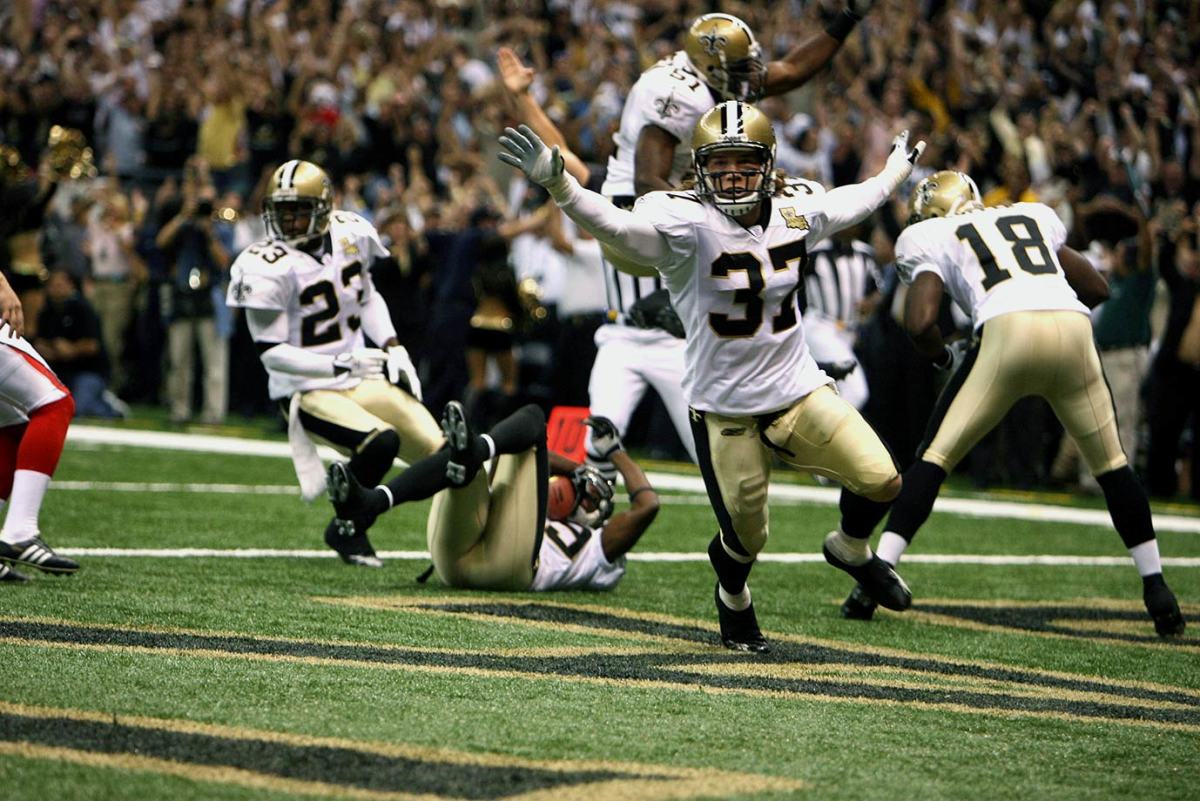
Sept. 25, 2006: Steve Gleason’s blocked punt that teammate Curtis Deloatch landed on in the end zone on just the fourth play of the game set the tone for the game and the season. The Saints beat their divisional rival Falcons that night 23–3.
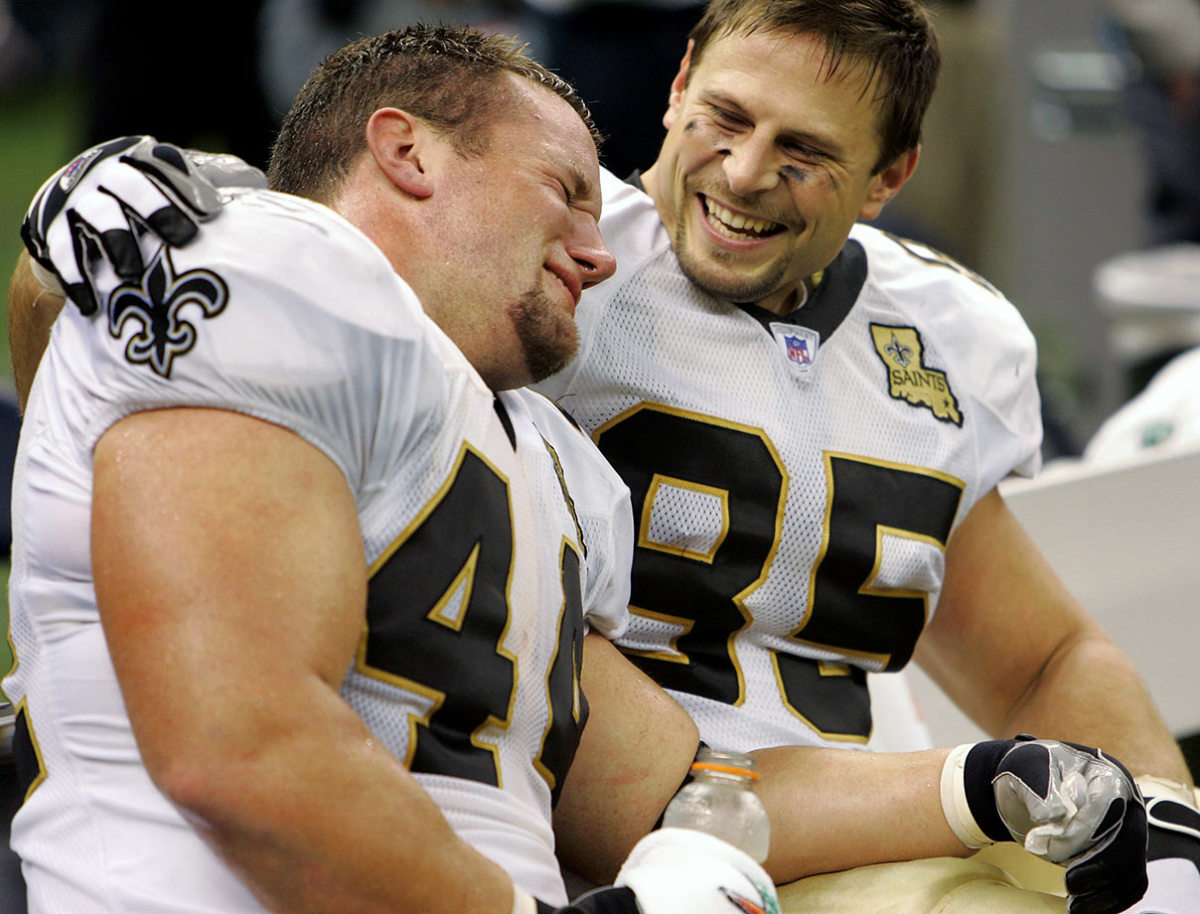
Sept. 25, 2006: Saints fullback Mike Karney is consoled by teammate tight end Ernie Conwell as he weeps at the end of the team's 23-3 win over the Atlanta Falcons.
